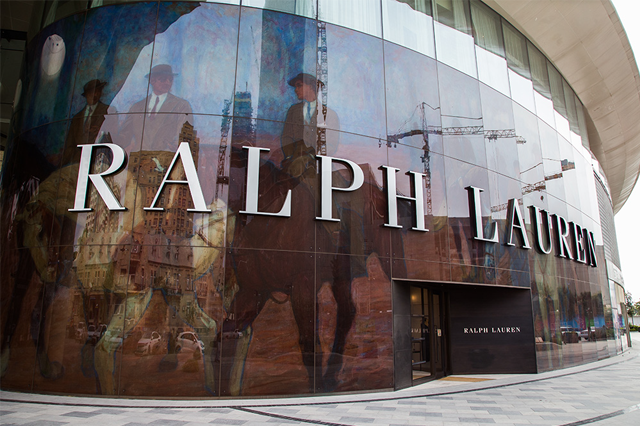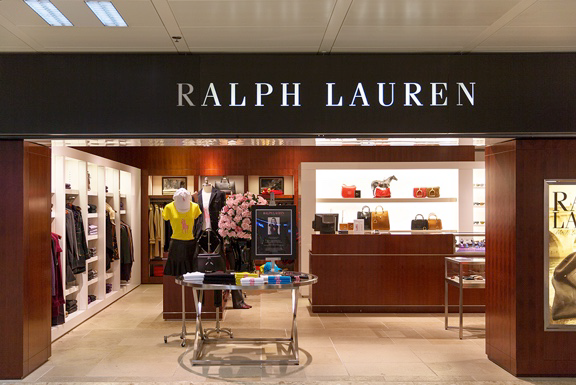
Web Developers
Ralph Lauren held an analyst day in New York on June 7. Presenting from the management team were Stefan Larsson, President and CEO; Ralph Lauren, Executive Chairman and Chief Creative Officer; Valerie Hermann, Global Brand President, Luxury, Women’s Collections and World of Accessories; and Bob Madore, Corporate SVP and CFO.
Larsson kicked off the meeting by discussing the strength and timelessness of the Ralph Lauren brand from the perspective of both the fashion media and consumers. Over the last 12 months, Ralph Lauren has been featured on 150 magazine covers and in 3,000 editorial features. However, consumers and their expectations are changing, and the apparel industry is going through significant transformation and disruption. Consumers now have an abundance of choice available to them—they can get whatever they want, whenever they want—and they are now in charge.
Larsson discussed some of the challenges Ralph Lauren has faced over the last few years, which have affected recent performance. Operating margins were 10.7% in FY16, down from 16.2% in FY13. Management categorized the company’s current challenges into two buckets: 1) the company has not focused enough on its core brand strength and 2) its current operating model is driving excess inventory.
Larsson joined Ralph Lauren in the fall of 2015 and has spent the last six months assessing every part of the company and its operations while coming up with the Way Forward Plan to carry the company forward.
 As part of the plan, Ralph Lauren will refocus on its iconic brand and on the core of what has made the company successful. The foundation of the plan is to refocus on and evolve both the core—the brand strategy and the product, marketing and shopping experience—and the operating model (by developing strong underlying business engines, rightsizing the cost structure, and strengthening leadership and the culture). The plan comprises a four-pronged approach:
As part of the plan, Ralph Lauren will refocus on its iconic brand and on the core of what has made the company successful. The foundation of the plan is to refocus on and evolve both the core—the brand strategy and the product, marketing and shopping experience—and the operating model (by developing strong underlying business engines, rightsizing the cost structure, and strengthening leadership and the culture). The plan comprises a four-pronged approach:
 The company will target a year-over-year decline in SG&A as a percentage of sales for the next few years. As a whole, management will be highly focused on ROI and on investing with discipline.
In addition, the company is focused on strengthening its leadership, its team and its culture. There have been three recent strategic hires, and three more are in the pipeline. Halide Alagöz was brought in to serve as the head of global sourcing, Fredrik Hjalmers was brought in to be head of global expansion and Marcelle Parrish was brought in to be head of e-commerce for North America.
The company will target a year-over-year decline in SG&A as a percentage of sales for the next few years. As a whole, management will be highly focused on ROI and on investing with discipline.
In addition, the company is focused on strengthening its leadership, its team and its culture. There have been three recent strategic hires, and three more are in the pipeline. Halide Alagöz was brought in to serve as the head of global sourcing, Fredrik Hjalmers was brought in to be head of global expansion and Marcelle Parrish was brought in to be head of e-commerce for North America.
The Way Forward Plan
 As part of the plan, Ralph Lauren will refocus on its iconic brand and on the core of what has made the company successful. The foundation of the plan is to refocus on and evolve both the core—the brand strategy and the product, marketing and shopping experience—and the operating model (by developing strong underlying business engines, rightsizing the cost structure, and strengthening leadership and the culture). The plan comprises a four-pronged approach:
As part of the plan, Ralph Lauren will refocus on its iconic brand and on the core of what has made the company successful. The foundation of the plan is to refocus on and evolve both the core—the brand strategy and the product, marketing and shopping experience—and the operating model (by developing strong underlying business engines, rightsizing the cost structure, and strengthening leadership and the culture). The plan comprises a four-pronged approach:
- Improving product and marketing as well as the shopping experience
- Significantly reducing supply chain lead times
- Implementing a disciplined distribution and expansion strategy
- Rightsizing the cost structure
Improving Product and Marketing as Well as the Shopping Experience
Evolving the brand strategy means focusing on the company’s core brands, which include Ralph Lauren, Lauren and Polo, in order to leverage the brands and their business strengths. Currently, core products represent 30%–35% of styles but 70% of profits. The company will eliminate the unproductive long tails of the assortments that are not as profitable. In terms of marketing, management will work to evolve the brand voice, refresh social media efforts and expand partnerships, while tightening its focus on analytics and ROI. Regarding the shopping experience, the company plans to strengthen the experience in the wholesale channel, build out the e-commerce channel and evolve in the retail channel. Wholesale is the company’s first priority.Significantly Reducing Supply Chain Lead Times
Management will work to develop a demand-driven supply chain by cutting lead times from 15 months to nine months, with an eight-week test pipeline. The goal is to plan inventory on demand by selling more with less. The company wants to develop a best-in-class sourcing platform to optimize quality, cost, speed and flexibility. It plans to achieve this by strengthening collaborations with its supplier base, and by developing platforms and multistep buying, which will drive costs down and drive quality up.Implementing a Disciplined Distribution and Expansion Strategy
Following 43 store closures in FY16, the company plans to close an additional 50 stores in FY17. Stores were evaluated on their ability to drive profitable sales and strengthen the brand. Distribution will be matched with how consumers want to shop.Rightsizing the Cost Structure
In terms of costs, the company will work to make its cost structure competitive. The organization will be rightsized to empower the “doers,” eliminating layers of middle management. The average number of management layers will drop to six from nine previously. The company will target a year-over-year decline in SG&A as a percentage of sales for the next few years. As a whole, management will be highly focused on ROI and on investing with discipline.
In addition, the company is focused on strengthening its leadership, its team and its culture. There have been three recent strategic hires, and three more are in the pipeline. Halide Alagöz was brought in to serve as the head of global sourcing, Fredrik Hjalmers was brought in to be head of global expansion and Marcelle Parrish was brought in to be head of e-commerce for North America.
The company will target a year-over-year decline in SG&A as a percentage of sales for the next few years. As a whole, management will be highly focused on ROI and on investing with discipline.
In addition, the company is focused on strengthening its leadership, its team and its culture. There have been three recent strategic hires, and three more are in the pipeline. Halide Alagöz was brought in to serve as the head of global sourcing, Fredrik Hjalmers was brought in to be head of global expansion and Marcelle Parrish was brought in to be head of e-commerce for North America.